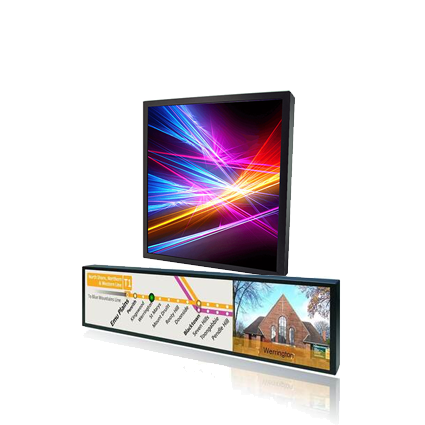Copyright © 2020-2021 Shenzhen CDTech Electronics LTD. All rights reserved. Site Map Powered by iwonder.cn

display / touch / bonding solutions

display / touch / bonding solutions
The Difference between Industrial Crystal Display and Ordinary Crystal Display
Crystal displays have become an integral part of our daily lives, from smartphones and laptops to televisions and digital signage. However, when it comes to industrial applications, the requirements for crystal displays are significantly different from those for ordinary consumer electronics. In this article, we will briefly talk about the major differences between industrial crystal displays and ordinary crystal displays.

1. Durability and Reliability
Industrial crystal displays are designed to withstand harsh conditions and operate in demanding environments such as factories, outdoor installations, and transportation systems. They are built with reinforced components and ruggedized enclosures to ensure durability and reliability. In contrast, ordinary crystal displays for consumer applications prioritize sleek design and aesthetics over durability.
Industrial crystal displays are often rated for extended temperature ranges and equipped with advanced cooling systems to prevent overheating during continuous operation. They are also engineered to resist shock, vibration, and electromagnetic interference. On the other hand, ordinary crystal displays are not designed to withstand extreme temperatures or high impact.
2. Brightness and Sunlight Readability
One of the key differences between industrial and ordinary crystal displays is the level of brightness and sunlight readability. Industrial crystal displays are specifically designed to be visible under direct sunlight or in brightly lit environments, which is critical for outdoor usage or applications with intense ambient light. They employ high-brightness backlighting technologies and anti-glare coatings to enhance visibility.
In contrast, ordinary crystal displays are optimized for indoor viewing conditions and may struggle to deliver clear images in bright lighting conditions. They often lack the necessary brightness levels to overcome severe glare or reflections caused by natural or artificial lighting sources.
3. Touchscreen Technology
Industrial crystal displays commonly feature robust touchscreen technologies to meet the demands of various applications, such as industrial control systems and interactive kiosks. These displays utilize highly durable touchscreens that can withstand heavy usage, vandalism, and chemical exposure. They often incorporate advanced touch technologies that support multi-touch gestures and stylus input.
Ordinary crystal displays, on the other hand, may offer basic touch capabilities for consumer applications like smartphones and tablets. While they are designed for everyday use, they may not be suitable for rugged environments or applications that require the reliability and durability of industrial-grade touchscreens.
4. Longevity and Availability
Industrial crystal displays typically have longer life cycles and extended availability compared to their ordinary counterparts. Industrial-grade displays have a longer manufacturing lifespan and are intended for long-term applications. This is crucial for industries that rely on consistent display performance and need to minimize maintenance and replacement costs.
In contrast, ordinary crystal displays for consumer electronics are often subject to rapid changes in technology and design. Manufacturers frequently update their product lines, leading to shorter availability of specific models or components. This can pose challenges for industries relying on a stable supply of display units.
In Conclusion
The differences between industrial crystal displays and ordinary crystal displays span various aspects, including durability, reliability, brightness, touch technology, and longevity. Understanding these differences is essential for selecting the appropriate display technology for specific applications and ensuring optimal performance in industrial settings.
By continuing to use the site you agree to our privacy policy Terms and Conditions.